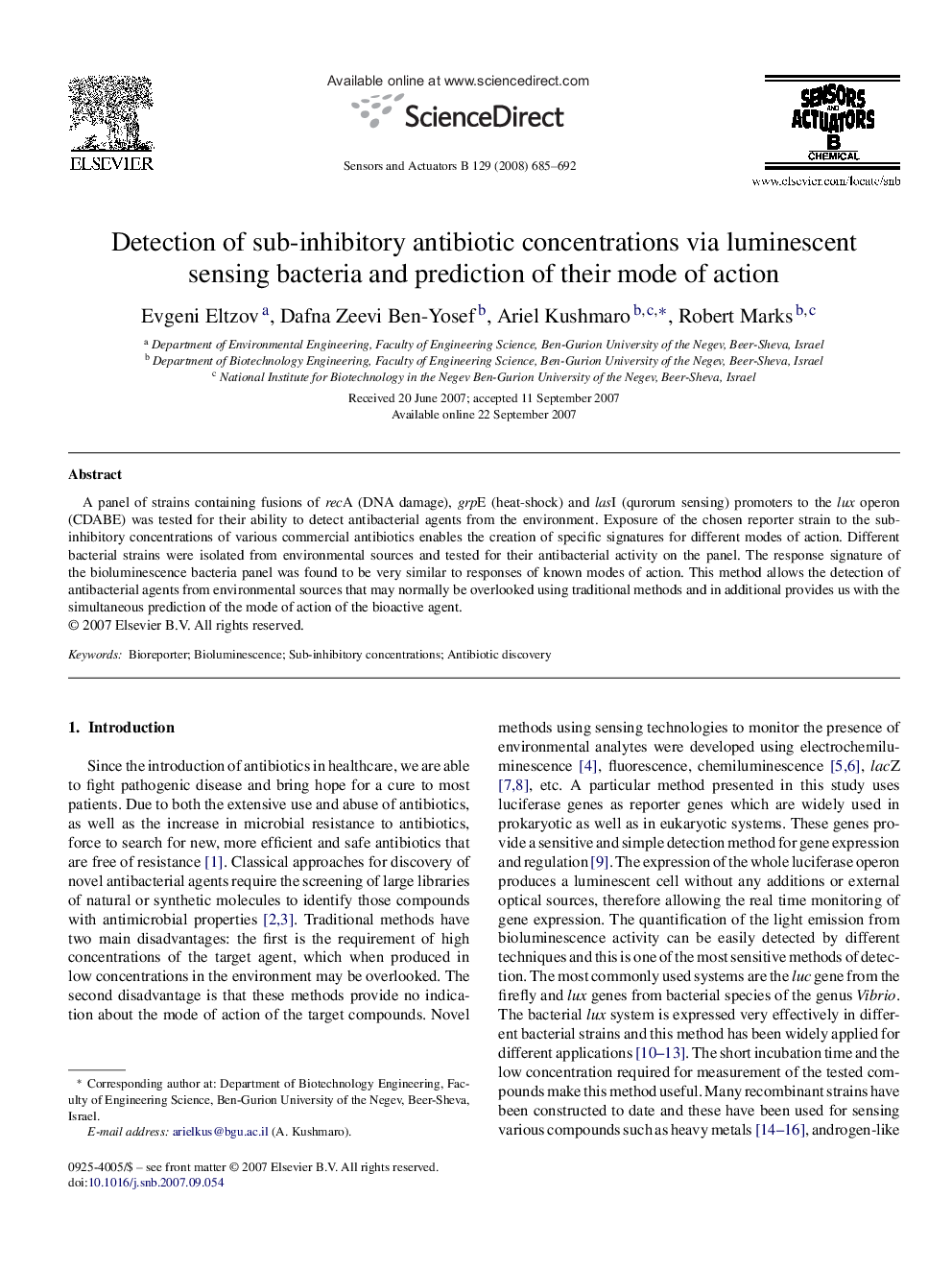| Article ID | Journal | Published Year | Pages | File Type |
|---|---|---|---|---|
| 746664 | Sensors and Actuators B: Chemical | 2008 | 8 Pages |
A panel of strains containing fusions of recA (DNA damage), grpE (heat-shock) and lasI (qurorum sensing) promoters to the lux operon (CDABE) was tested for their ability to detect antibacterial agents from the environment. Exposure of the chosen reporter strain to the sub-inhibitory concentrations of various commercial antibiotics enables the creation of specific signatures for different modes of action. Different bacterial strains were isolated from environmental sources and tested for their antibacterial activity on the panel. The response signature of the bioluminescence bacteria panel was found to be very similar to responses of known modes of action. This method allows the detection of antibacterial agents from environmental sources that may normally be overlooked using traditional methods and in additional provides us with the simultaneous prediction of the mode of action of the bioactive agent.
